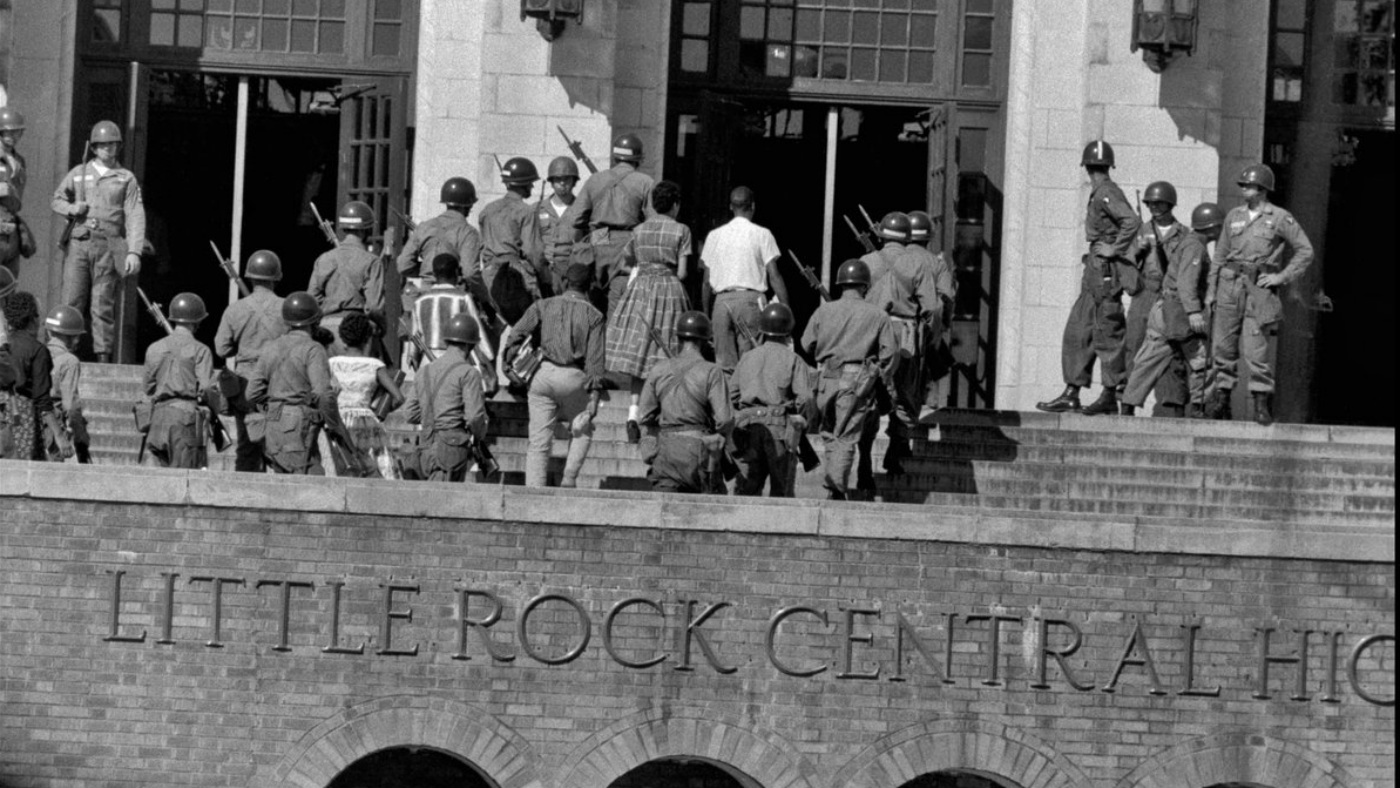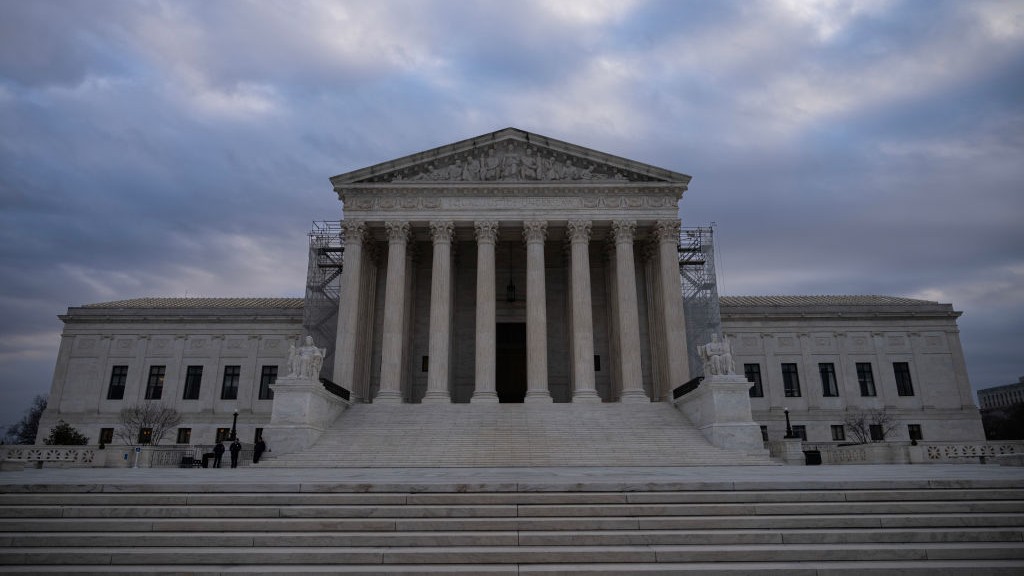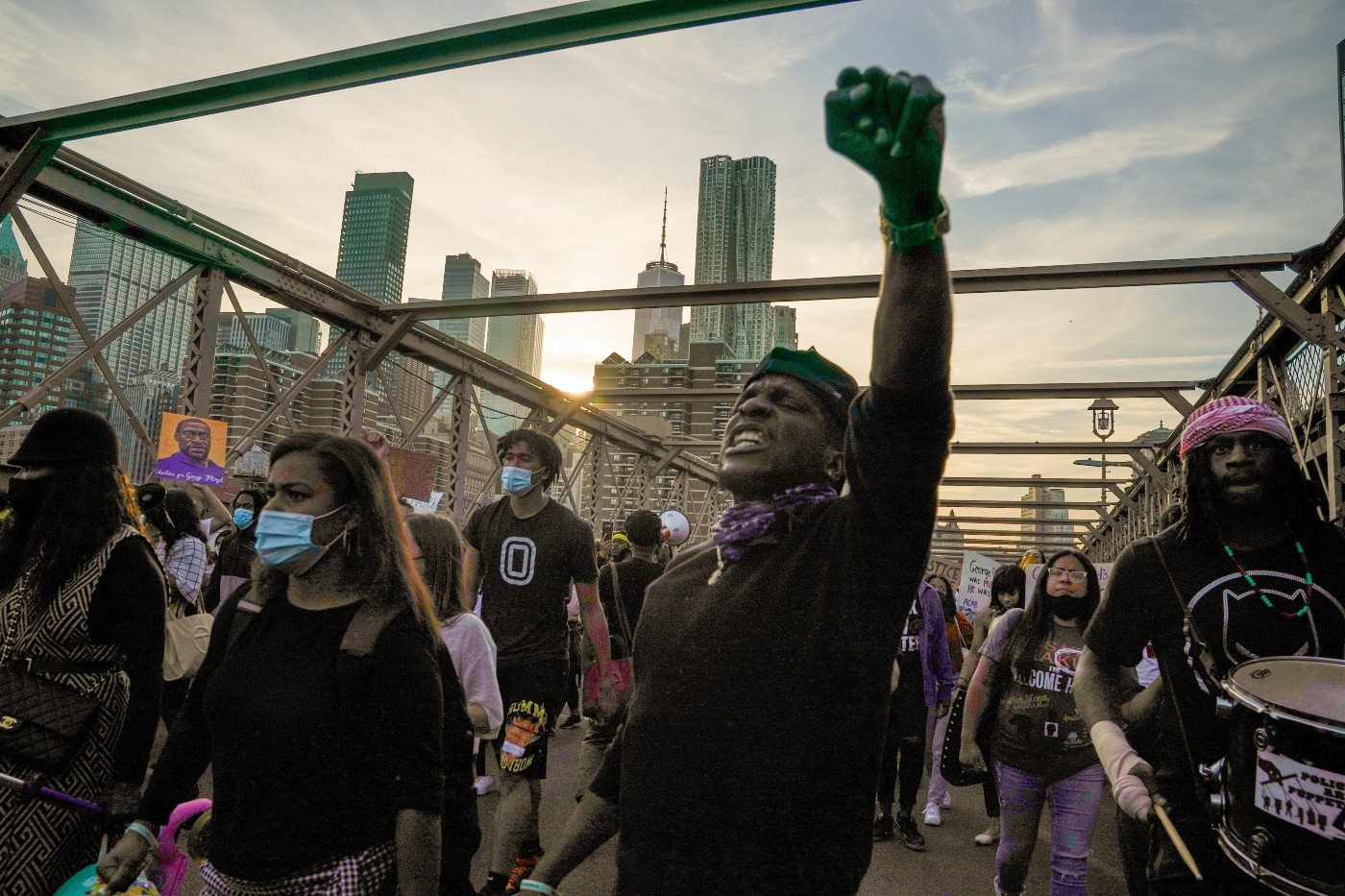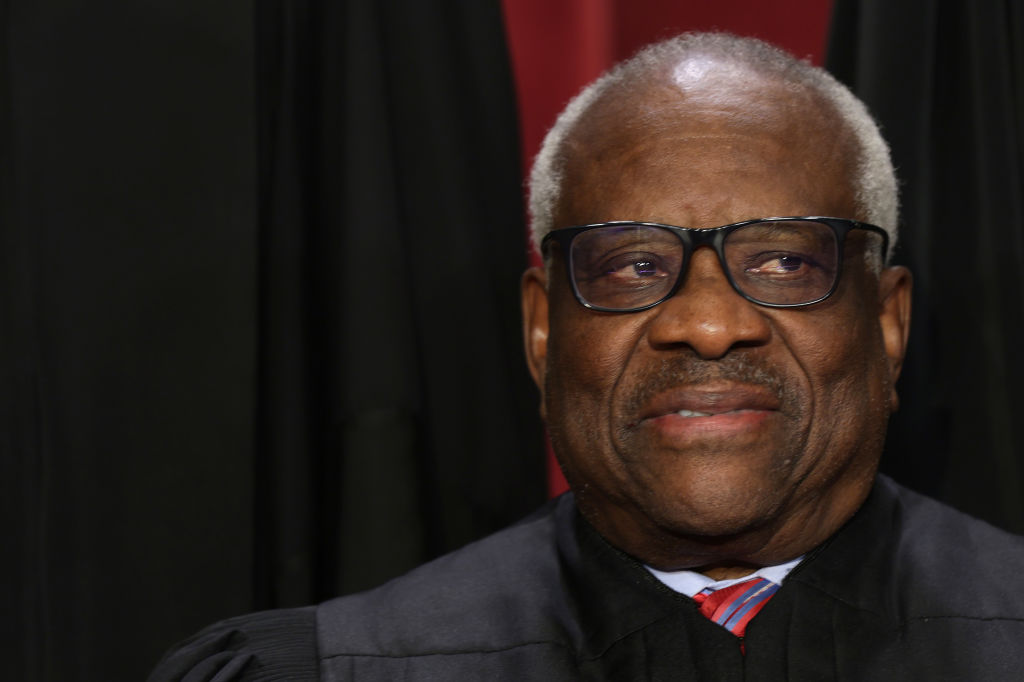Little Rock at 60: how school segregation returned to the US
Interplay of race, class and justice means schools are now as racially separated as they were in the 1960s

On 25 September 1957, nine African American teens in Little Rock, Arkansas, who just three weeks earlier had been blocked from taking their place at high school by members of the national guard, braved a hostile white crowd, climbed the school steps and were escorted to class by the US Army.
The Little Rock Nine, as they became known, were revered for shattering racial segregation in US schools. But 60 years on from the events of that day, racial separation in US schools remains.
While levels of segregation did drop between the late 1960s and 1980, they have steadily increased since then to the point that schools are about as segregated today as they were in the late 1960s.
The Week
Escape your echo chamber. Get the facts behind the news, plus analysis from multiple perspectives.

Sign up for The Week's Free Newsletters
From our morning news briefing to a weekly Good News Newsletter, get the best of The Week delivered directly to your inbox.
From our morning news briefing to a weekly Good News Newsletter, get the best of The Week delivered directly to your inbox.
An interplay of race, class and geography is at work, but segregation has also been revived through a series of decisions by the US judiciary.
In 1954, the Supreme Court issued its landmark Brown v. Board of Education decision which made state-sanctioned segregation of public schools unconstitutional.
However, in 1974, the Supreme Court partly reversed this in the case of Milliken v. Bradley, stating that school systems were not responsible across district lines unless they each deliberately engaged in a policy of segregation. In other words, integration could not take place across school districts, so schools in Detroit, where the case was brought, were prevented from integrating by exchanging black children with the predominantly white and wealthy suburb of Bloomfield Hills.
In essence, the case provided the opportunity for US communities to secede from their school district, thereby allowing communities to segregate again.
A free daily email with the biggest news stories of the day – and the best features from TheWeek.com
Segregation by another name
Gardendale, in Jefferson County, Alabama, is one such example. Gardendale made the headlines recently when a district judge ruled that the town could secede from the Jefferson County school district – comprising 48% African Americans and 44% white children – in order to create a new school district that would be predominantly white.
Gardendale parents argued that they were simply ensuring their children had access to good schools. But the evidence pointed “in the other direction,” says Derek Black, professor of law at the University of South Carolina.
“In language rarely offered by modern courts, the judge found, at the heart of the secession, ‘a desire to control the racial demographics of [its] public schools’ by ‘eliminat[ing]… black students [from] Gardendale schools,’” he writes in The Conversation.
But the judge allowed Gardendale to secede anyway, saying that if she stopped the move, innocent parties could suffer – black students in Gardendale would inevitably feel unwelcome and those seeking educational improvements would be hindered.
“Simply put, the judge could not find an upside to blocking secessionists whom she herself characterised as racially motivated,” writes Black.
Regression and recession
A study conducted by EdBuild, a non-profit organisation that advocates fairer primary education in the US, shows that secession efforts like the one in Gardendale have been increasing since 2000.
Between 1970 and 1990, the US made steady progress toward school desegregation, particularly in the South. But since the 1990s, that progress has been reversing in public schools, while the “largely intractable segregation of the cities in the North has intensified,” according to EdBuild’s study.
Across the US, almost 75% of black students attend “majority-minority” schools and almost 40% attend schools with a white population of 10% or less, according to Beverly Daniel Tatum, a psychologist and president emerita of Spelman College, writing in a Los Angeles Times op ed column.
The racial segregation has a further knock-on effect on the socio-economic makeup of the schools. Black and Latino students are more likely than white students to be in a school where 60% or more of their classmates live in “poverty” – measured by the number of students eligible for free or reduced-price lunch programmes, Tatum said.
Conflating integration with discrimination
The return to US racial segregation is in large part due to a series of key US Supreme Court decisions that have “eliminated strategies such as cross-district busing, dismantled local court supervision of desegregation plans, and limited use of race-based admissions to ensure diversity in schools,” writes Tatum.
The Supreme Court’s most severe blow to integration since the Milliken case came in 2007, however, in the Parents Involved in Community Schools v. Seattle School District No. 1 case (PICS) in which the court prohibited the use of “explicit racial classifications” in school admissions.
PICS involved voluntary school desegregation/integration in two school districts in Seattle, Washington and Louisville, Kentucky. Both schools used racial classifications to achieve diversity and/or avoid racial isolation but the court found that the plans weren’t “narrowly tailored” enough to tie the means or method used to the end goal.
In his summation of the decision, Chief Justice John Roberts Jr. wrote: “The way to stop discrimination on the basis of race is to stop discriminating on the basis of race.” But by “conflating integration with discrimination, Roberts effectively reversed Brown v. Board,” says Tatum.
Some children left behind
A significant body of evidence “shows that students of colour and students living in poverty benefit from attending integrated schools,” says Matt Barnum of The 74, a non-profit, non-partisan news site covering education and named after the US’s 74m children.
One study found that going to a desegregated school “significantly increased both educational and occupational attainments, college quality and adult earnings, reduced the probability of incarceration, and improved adult health status” among black students.
“The research is much more mixed regarding the academic impact of integration on white affluent students,” says Barnum. On the whole, “most studies have found no apparent effect, one way or the other, on measurable outcomes, such as test scores or high school dropout rates,” he said.
A lost generation
Sixty years on from the Little Rock Nine’s brave stand, school segregation remains “one of the great challenges of American education,” says Jack Schneider in The Atlantic.
Ultimately it comes down to a lack of funding across the board, says Black.
“Those with less money tend to get a worse education. Until these states reform their overall education funding systems, the inequalities and inadequacies that they produce will continue to fuel current racial motivations,” he writes.
But as long as African American children remain “trapped in under-resourced schools,” many won’t have the opportunity to develop their talents,” says Tatum.
“A loss not just for those children and their families, but the whole country.”
-
 Venezuela’s Trump-shaped power vacuum
Venezuela’s Trump-shaped power vacuumIN THE SPOTLIGHT The American abduction of Venezuelan President Nicolás Maduro has thrust South America’s biggest oil-producing state into uncharted geopolitical waters
-
 Most data centers are being built in the wrong climate
Most data centers are being built in the wrong climateThe explainer Data centers require substantial water and energy. But certain locations are more strained than others, mainly due to rising temperatures.
-
 ‘Maps are the ideal metaphor for our models of what the world might be’
‘Maps are the ideal metaphor for our models of what the world might be’Instant Opinion Opinion, comment and editorials of the day
-
 10 things you need to know today: January 6, 2024
10 things you need to know today: January 6, 2024Daily Briefing Supreme Court to rule on Trump being kept off 2024 presidential ballots, Hezbollah fires rockets toward Israel following Hamas leader’s death, and more
-
 George Floyd legacy: what has changed in the US three years on
George Floyd legacy: what has changed in the US three years onfeature Police officers are more accountable but has ‘white empathy’ hit a wall?
-
 Clarence and Ginni Thomas face new ethics scrutiny over secret payments, gifted private school tuition
Clarence and Ginni Thomas face new ethics scrutiny over secret payments, gifted private school tuitionSpeed Read
-
 Clarence Thomas did not disclose real estate he sold to GOP megadonor Harlan Crow, report details
Clarence Thomas did not disclose real estate he sold to GOP megadonor Harlan Crow, report detailsSpeed Read
-
 Clarence Thomas, under scrutiny for regular lavish trips from GOP donor, stopped reporting gifts in 2004
Clarence Thomas, under scrutiny for regular lavish trips from GOP donor, stopped reporting gifts in 2004Speed Read
-
 Supreme Court to hear arguments on water supply shortages for Navajo Nation
Supreme Court to hear arguments on water supply shortages for Navajo NationSpeed Read
-
 What Harry & Meghan reveals about the Duchess of Sussex’s reputation within the royal family
What Harry & Meghan reveals about the Duchess of Sussex’s reputation within the royal familyfeature New Netflix documentary shines a light on the British monarchy’s relationship with the patriarchy and whiteness
-
 ‘Where are you from?’: a question of race and identity
‘Where are you from?’: a question of race and identityTalking Point Lady Hussey racism row could hardly have come at a worse time for the royals